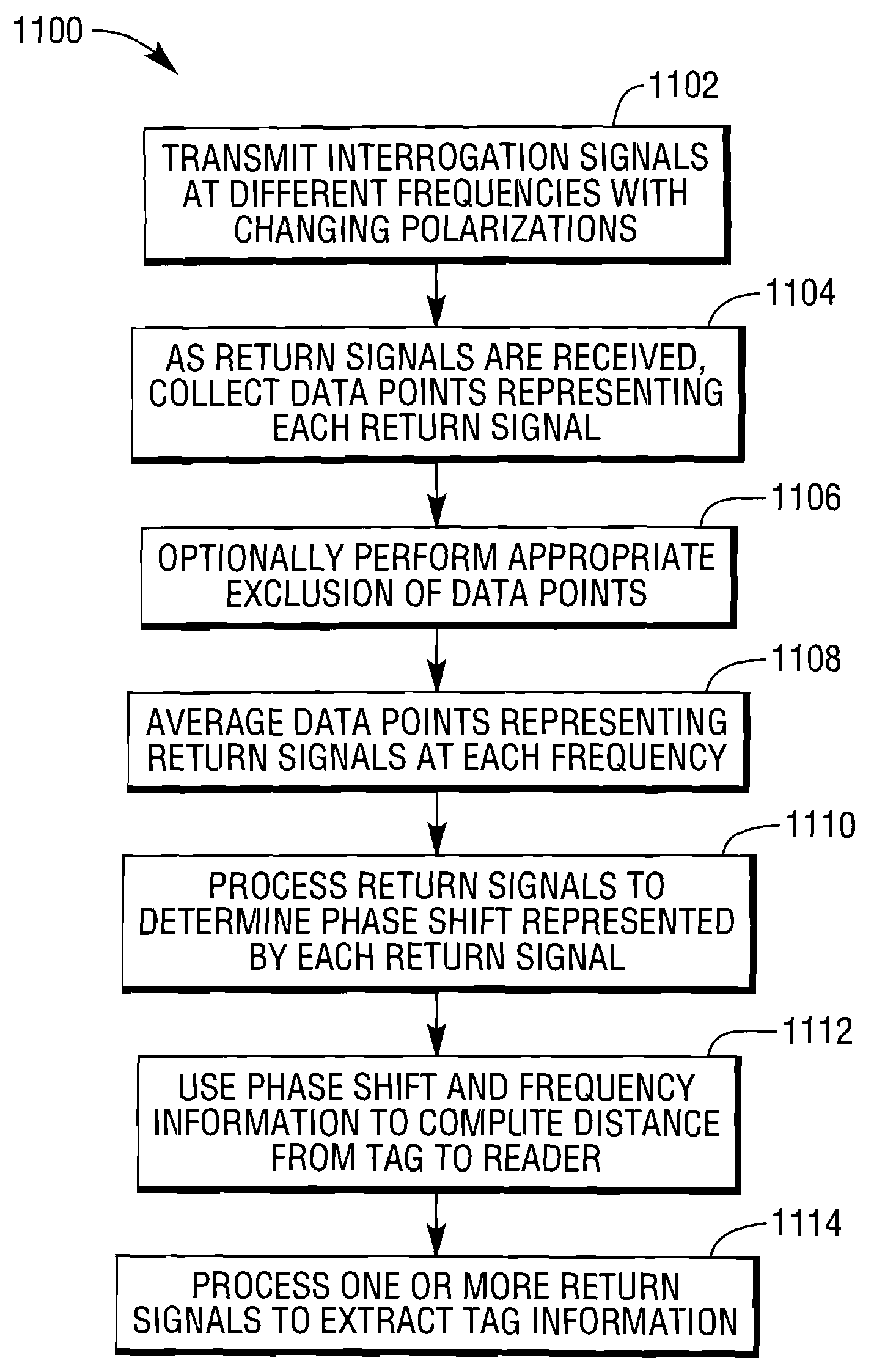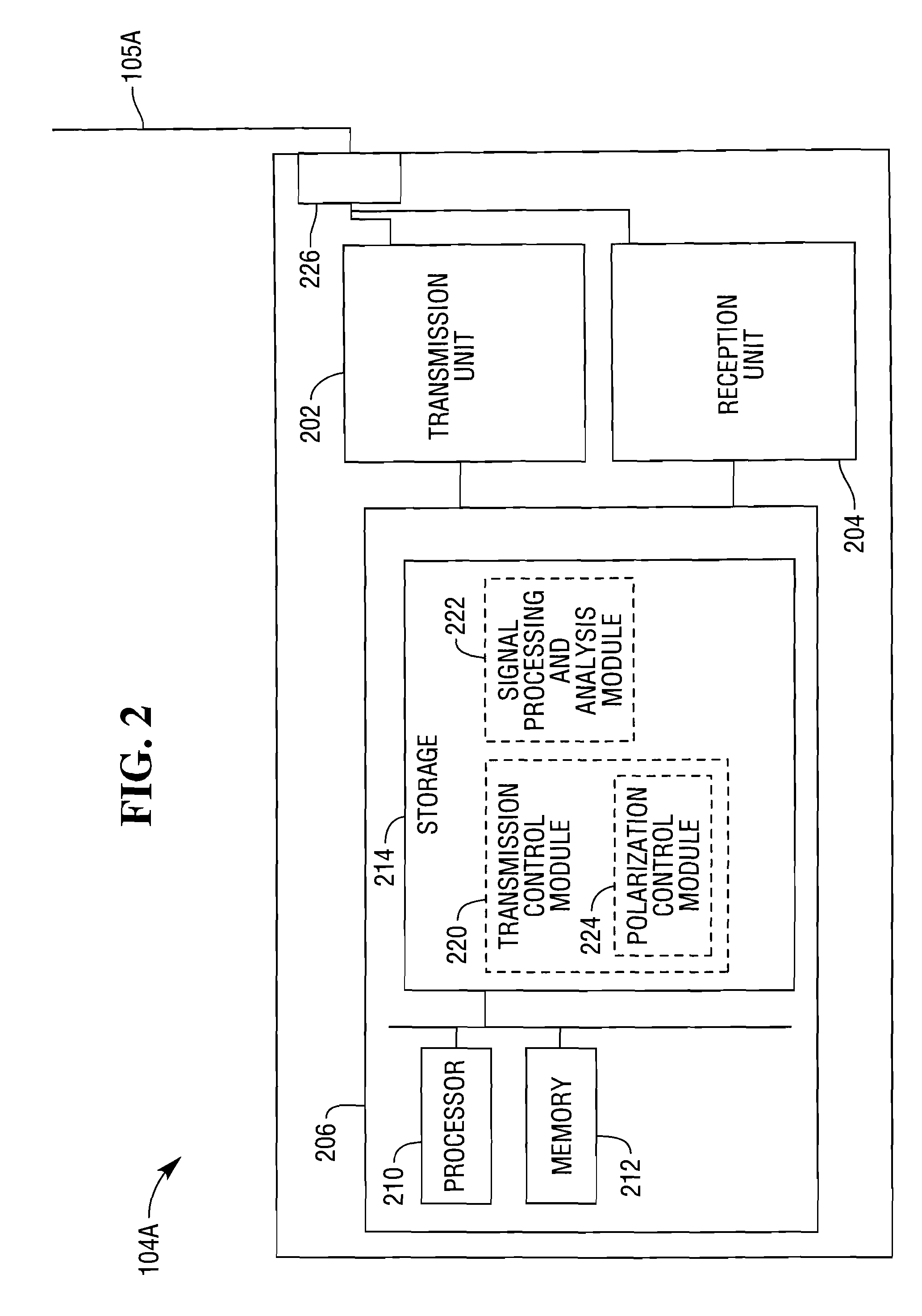Methods and Apparatus for Distance Determination for Radiofrequency Identification Devices
a radiofrequency identification and distance determination technology, applied in diversity/multi-antenna systems, polarisation/directional diversity, wireless communication, etc., can solve problems such as reducing range accuracy, rendering difficult or in some cases impossible the use of phase information to accurately compute distance, and making such avoidance more difficul
- Summary
- Abstract
- Description
- Claims
- Application Information
AI Technical Summary
Problems solved by technology
Method used
Image
Examples
Embodiment Construction
[0016]FIG. 1 illustrates an RFID system 100 according to an aspect of the present invention. The system 100 includes a plurality of RFID tags 102A-102E, and a plurality of RFID readers 104A, 104B, and 104C, including antennas 105A, 105B, and 105C, respectively. The readers 104A-104C may suitably communicate with a server 106 over a local area network (LAN) 108, which may be a wired or wireless network, or may provide both wired and wireless access. When one of the readers is used to interrogate for the presence of an RFID tag, the reader emits interrogation signals at differing frequencies. The differing frequencies will produce differing phases, and the differing frequencies and phases of the signals returned to the reader can be used to compute the distance between the reader and a tag responding to the reader. The distance between the reader and the tag is given by the following computation:
d=(12)(cf1-f2)(θ1-θ22π),
where c is the velocity of light.
[0017]If the signal returned to a...
PUM
 Login to View More
Login to View More Abstract
Description
Claims
Application Information
 Login to View More
Login to View More - R&D
- Intellectual Property
- Life Sciences
- Materials
- Tech Scout
- Unparalleled Data Quality
- Higher Quality Content
- 60% Fewer Hallucinations
Browse by: Latest US Patents, China's latest patents, Technical Efficacy Thesaurus, Application Domain, Technology Topic, Popular Technical Reports.
© 2025 PatSnap. All rights reserved.Legal|Privacy policy|Modern Slavery Act Transparency Statement|Sitemap|About US| Contact US: help@patsnap.com



